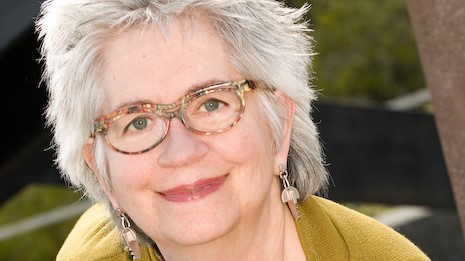
Kathleen McLean is the recipient of the 2018 AAM Distinguished Service to Museums Award, which recognizes an individual’s excellence and contributions to the museum field for at least 20 years. McLean is principal of Independent Exhibitions, a museum consulting firm specializing in exhibition development, design, programming, and strategic planning. Below she shares her thoughts on how the museum field’s evolution and future impact. This interview is a continuation from the Tributes and Transitions section of the September/October issue of Museum magazine (a benefit of membership with AAM).
How did you first get interested in museums?
I never planned to work in museums. But when I was hired as a museum curatorial specialist at the Oakland Museum, I knew I was home. I could explore and develop so many of my interests, from art making and social justice work to intercultural communications and experimentation. Making things, learning things, working with diverse cultures: it was the mash-up of creativity and social practice that I had been seeking for a long time.
How has the field changed over your career?
So much about the museum field has changed. A leadership shift from mission-based content experts to market-based business people has affected many aspects of museum practice. Business models have brought a consciousness about sustainability and accountability, but also an increasing misunderstanding about the role of museums as mission-based agents of social change. We need to take the best of mission and market values and create more holistic ways of positioning and managing museums.
Professional roles have also changed. When I entered the field, designers and educators struggled for credibility within traditional museum power structures, insisting that museums were sites of both serious and joyful learning and arguing that design meant more than picking a wall color. Today, design and education professionals are core players in most museums and are being joined by new types of museum professionals, like “chief instigators” and “visitor experience curators.” Additionally, visitor researchers and evaluators, once unheard of in most museums, are now often essential participants.
Many of the on-the-job training and apprenticeship practices of the 20th century have given way to university-based museum studies programs, which is leading to expectations that degrees confer expertise without the trial-by-doing, learning through failure, and working with master makers and programmers. Valuable knowledge and skills are being lost in the transition.
But a lot hasn’t changed. We still use the design development process that we’ve been using for the last 30 years. And as a result, I don’t think that most of the programs and exhibitions being created today are essentially different from their 1980s counterparts. The materials and tools—like digital interfaces—have vastly changed, but the ubiquitous “push-content” paradigm still holds strong, squeezing out opportunities for authentic dialogue, inquiry, and adaptability.
I also believe that we continue to “reinvent the wheel” with community engagement and education initiatives that only scratch the surface, and I’m disappointed by the continuing lack of diversity among museum boards, staff, and visitors. Conversely, I am heartened and excited by an increase in culturally specific museums, such as the National Museum of the American Indian and the National Museum of African American History and Culture.
What has been crucial to your success in the field?
Over the years, I have worked alongside many of the field’s innovators and visionaries. I learned a great deal from practitioners who shared their knowledge and experience and gave me the courage to follow my instincts and passions, to challenge the status quo, and to work toward more accessible museums.
I also have moved around quite a bit, shifting from in-house positions to consulting practice, and back to in-house leadership. I have worked in and for many different types of museums, from art, science, and history museums to children’s and multidisciplinary museums. This diversity of experience has given me an unusual perspective on the strengths and weaknesses of museums overall and their potential for societal transformations.
Perhaps most significantly, I was trained in an innovative and groundbreaking “social experiment” within a museum that taught me to take risks, experiment with many ideas, and tolerate a huge amount of ambiguity in choreographing museum experiences. These I consider my most important skills.
What is the greatest challenge you face in your work?
I spend more of my time trying to convince museum professionals to take risks and embrace innovation than I spend actually doing the project work. In almost every project, I still struggle with the lurking presence of what I call “museum taboos” and “change monsters”—specters that reinforce unchallenged assumptions about processes, roles, and stakeholder and visitor expectations. Familiar refrains of “we don’t do that here,” “I’ll get in trouble for that,” “my colleagues will think I’m crazy,” “we’ll lose our funding,” and “visitors don’t want that” keep me from doing transformative work.
In your opinion, what pressing societal issue should museums address?
Museums, at their best, are the keepers of evidence—and I’m not just referring to objects—but evidence of our human struggle to understand ourselves and others, evidence of our capabilities and our capacity for imagination and our inseparable relationship with this planet. In a world where creativity, equality, generosity, and even veracity are so maligned and disparaged—where evidence is so disregarded—we who work in museums have an urgent responsibility to hone our existing skills and develop brave new ones.
We need to bear witness, by documenting and reflecting upon current political and social disruptions and by speaking truth to power. We need to provide sanctuary in the broadest sense of the word—sanctuary for the mind, the body, and especially for the human spirit. We need to celebrate our commonalities and our diversities, build new collaborative relationships, and promote democratic ideals. I believe museums are uniquely positioned to do this critical work.







